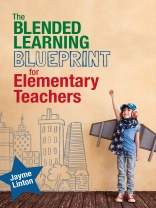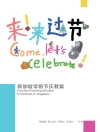Your blueprint for empowering students through personalized learning
In today’s technologically-integrated world, blended learning is a natural fit for the elementary classroom, where many teachers already think flexibly about the learning environment, resources, and time in order to meet diverse student needs. As blended elementary classrooms become more common, teachers and administrators must develop a shared understanding of the characteristics of effective instruction in blended environments.
This guide is designed to help K-5 teachers develop and carry out a plan for effective instruction in blended environments. Presented in a step-by-step workbook format, this resource identifies the competencies blended teachers need and strategies for development, culminating in a personalized implementation plan for successful blended instruction. Readers will
- Take an in-depth look at the i NACOL Blended Learning Teacher Competency Framework, to foster a deeper understanding of the teacher proficiencies needed for effective blended learning environments.
- Identify your own strengths and needs related to the blended teacher competencies.
- Develop a personalized blueprint for designing and facilitating blended learning in your classrooms.
- Tailor your needs and goals when it comes to maximizing instructional time, personalizing learning, empowering students, pursuing professional learning, and more.
- Explore specific strategies and examples of blended learning in elementary classrooms, and reflect on your own plans for blended instruction.
Making the shift to blended learning requires intentional planning and support. This workbook will guide you through the process of developing an actionable plan for blended learning in your classroom.
Mục lục
Preface
Rationale
Organization
Possible Uses
Acknowledgments
Publisher’s Acknowledgments
About the Author
INTRODUCTION Defining Blended Learning
Why Blended Learning?
Definition and Models of Blended Learning
Internet Safety in the Elementary Classroom
CHAPTER 1 Blended Learning Teacher Competencies
Mindsets
Qualities
Adaptive Skills
Technical Skills
CHAPTER 2 Crafting Your Vision
Adapting Blended Models
Rethinking the Role of Teachers and Learners
Letting Go of Control
Redesigning the Learning Space
Designing the Blueprint
CHAPTER 3 Maximizing Instructional Time
Answering the Essential Question About Time
Rethinking the School Day
Cloning the Teacher
Designing the Blueprint
CHAPTER 4 Making It Personal
Moving From Differentiation to Personalized Learning
Designing Personalized Pathways
Making Pathways Work
Designing the Blueprint
CHAPTER 5 Empowering Students
Leveraging Formative Assessments
Managing Data and Goal-Setting
Tapping Into Student Passions
Designing the Blueprint
CHAPTER 6 Expanding Your Toolbox
Designing Collaborative Learning Experiences
Leveraging Adaptive Tools for Self-Paced Learning
Amplifying Student Voice
Designing the Blueprint
CHAPTER 7 Professional Learning
Collaborating With Colleagues
Connecting With Stakeholders
Owning Your Professional Learning
Designing the Blueprint
CHAPTER 8 Getting Started
Starting Small
Planning for Sustainability
Designing the Blueprint
Appendices
Appendix A: Blueprint for Blended Learning
Appendix B: i NACOL Blended Learning Teacher Competency Framework
Appendix C: Reflecting on the i NACOL Blended Learning Teacher Competencies
Appendix D: Recommended Reading
Appendix E: Guide for Coaching and Supporting Blended Teachers
References
Index
Giới thiệu về tác giả
Dr. Jayme Linton is Assistant Professor of Education at Lenoir-Rhyne University in Hickory, North Carolina, and program coordinator for the university′s graduate program in online teaching and instructional design. Previously, she held positions as Instructional Technology Facilitator, Staff Development Coordinator, Instructional Coach, and elementary teacher. She was recognized by the National School Board Association as one of the ’20 to Watch’ for 2012-13 and was selected for ISTE′s Making IT Happen Award by NCTIES in 2013. Jayme is co-founder of #NCed, a bi-weekly Twitter chat for North Carolina educators, and #edteach, a bi-weekly Twitter chat for pre-service teachers.












